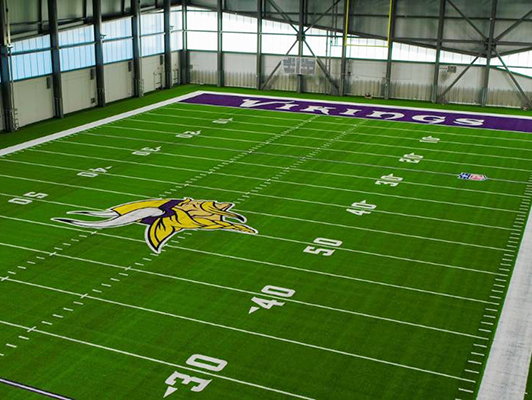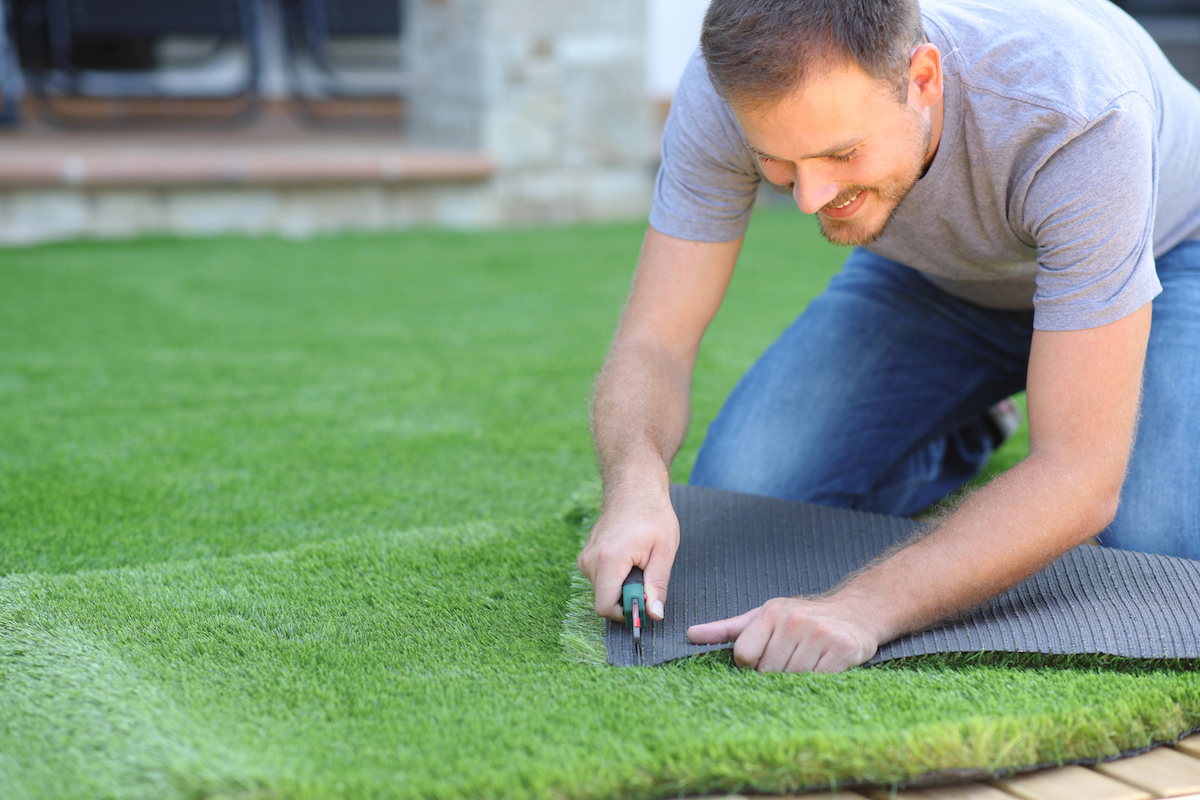Enjoy a Ideal Lawn with Arizona Artificial Turf for Any Outdoor Space
Enjoy a Ideal Lawn with Arizona Artificial Turf for Any Outdoor Space
Blog Article
Explore the Environmental Advantages of Opting for Artificial Turf Solutions
The fostering of fabricated turf solutions offers an engaging possibility to attend to pushing environmental obstacles. By significantly minimizing water use and decreasing the application of unsafe chemicals, these alternatives not just promote sustainable landscaping but additionally secure neighborhood ecological communities.
Water Conservation Conveniences
One of the most considerable advantages of fabricated lawn is its capability to conserve water. Typical lawn yards call for significant watering, particularly in areas prone to drought or water restrictions. In comparison, synthetic grass does not need watering, substantially minimizing the general demand for water sources. This feature is specifically useful in deserts where water scarcity is a pressing problem.
By eliminating the need for normal watering, man-made grass contributes to lasting landscape practices and aids reduce the ecological effect of excessive water usage. Furthermore, the conservation of water includes the reduction of drainage, which can lead to dirt disintegration and waterway pollution.
Additionally, the installation of artificial turf allows communities and homeowners to assign water sources much more effectively, concentrating on crucial uses such as alcohol consumption water and agriculture. The change towards synthetic grass not just promotes liable water use however likewise lines up with wider environmental objectives targeted at maintaining natural resources.
As communities progressively focus on sustainability, the water preservation benefits of fabricated lawn provide a compelling instance for its adoption in business and residential landscape design tasks.
Minimized Chemical Use
The change to synthetic grass considerably decreases the dependence on chemical treatments commonly used in natural yard maintenance. Standard grass administration typically includes the application of plant foods, chemicals, and herbicides to promote growth and control insects. These chemicals can position threats to human health and wellness, regional wildlife, and the atmosphere, adding to dirt and water contamination.
In comparison, fabricated lawn eliminates the requirement for these dangerous materials. By reducing the launch of synthetic compounds into the environment, synthetic turf advertises healthier soil and water systems.
Moreover, the absence of chemical drainage linked with synthetic grass setups helps safeguard local waterways from pollution, supporting aquatic life and preserving biodiversity. Turf installation phoenix az. As neighborhoods increasingly focus on lasting methods, choosing for synthetic grass offers a sensible service that lines up with ecological conservation objectives. With this shift, residential or commercial property owners can delight in rich environment-friendly spaces without endangering eco-friendly health, leading the way for a more sustainable future
Reduced Carbon Impact

Furthermore, the installation of synthetic grass can lead to considerable water preservation. Natural lawns need significant amounts of water for watering, which find here not just includes in the carbon footprint connected with water removal and treatment yet additionally pressures local water sources. In contrast, artificial grass requires minimal maintenance, calling for no watering, thus significantly minimizing water use and its associated energy prices.
In addition, the durability of synthetic grass adds to its decreased carbon influence. With a life-span of up to 15 years or even more, the demand for constant substitutes is lessened, causing much less waste and reduced power consumption in manufacturing and throwing away typical grass options. In general, man-made lawn offers a sustainable alternative for eco mindful landscaping.
Environment Preservation
Environment preservation is a vital factor to consider in the dispute over landscaping choices, particularly when comparing artificial turf to natural grass. Natural yard yards frequently call for extensive maintenance, consisting of making use of chemicals, fertilizers, and herbicides, which can negatively affect neighborhood communities. These chemicals can leach right into the soil and waterways, damaging native vegetation and fauna and disrupting neighborhood environments.
Fabricated turf eliminates the need for hazardous chemicals, thus shielding neighboring wild animals and preserving the honesty of bordering environments. The setup of man-made turf can lead to the conversion of former turf areas into even more biodiverse landscapes, such as pollinator gardens or native plant locations, which can sustain regional wildlife.
Eventually, the transition to synthetic lawn not only conserves water and decreases upkeep efforts however i thought about this likewise promotes a more harmonious partnership in between human tasks and the natural surroundings, advertising habitat conservation at the same time.
Long-Term Sustainability
Long-term sustainability is an essential consider evaluating the benefits of synthetic grass over typical yard yards. Among one of the most considerable advantages of man-made lawn is its durability; it can last approximately 15-20 years with very little upkeep, whereas natural yard calls for frequent reseeding and substitute. This longevity decreases the need for constant resources, such as water, plant foods, and pesticides, which are important for preserving a healthy and balanced yard lawn.
In addition, synthetic grass adds to a reduction in carbon discharges related to grass care equipment. Traditional yards frequently call for gas-powered mowers, trimmers, and blowers, every one of which add to air contamination. Artificial turf companies phoenix. In comparison, synthetic grass removes the requirement for such devices, promoting a cleaner atmosphere
Moreover, the manufacturing of synthetic grass significantly uses recycled materials, enhancing its sustainability profile. As makers embrace eco-friendly methods, the environmental impact of synthetic grass remains to decrease.

Verdict
The adoption of artificial lawn options presents considerable environmental benefits, including considerable water preservation, reduced dependence on dangerous chemicals, and a reduced carbon footprint. Moreover, synthetic lawn help in protecting natural habitats by decreasing land disruption and promoting lasting sustainability with using durable materials. Jointly, these aspects emphasize the possibility of synthetic lawn to add favorably to environmental health and provide a feasible option to typical landscaping practices in an increasingly resource-conscious world.
In comparison, synthetic grass does not need watering, substantially decreasing the total demand for water resources. By decreasing the release of synthetic compounds right into the community, fabricated lawn promotes much healthier soil and water systems.
In addition, the setup of man-made lawn can result in significant water conservation. In comparison, artificial lawn needs very little maintenance, needing no watering, consequently substantially minimizing water use and its connected power prices.

Report this page